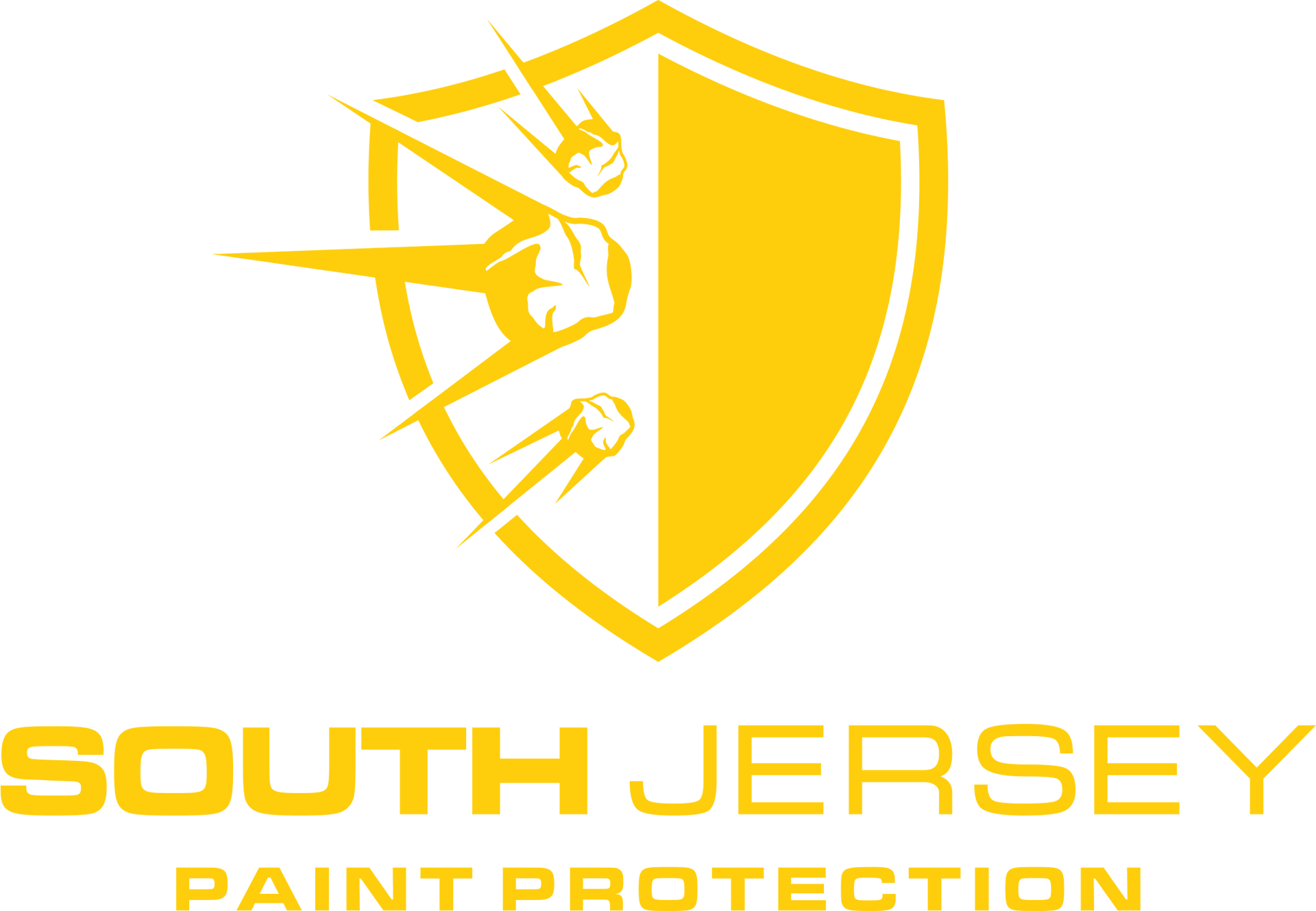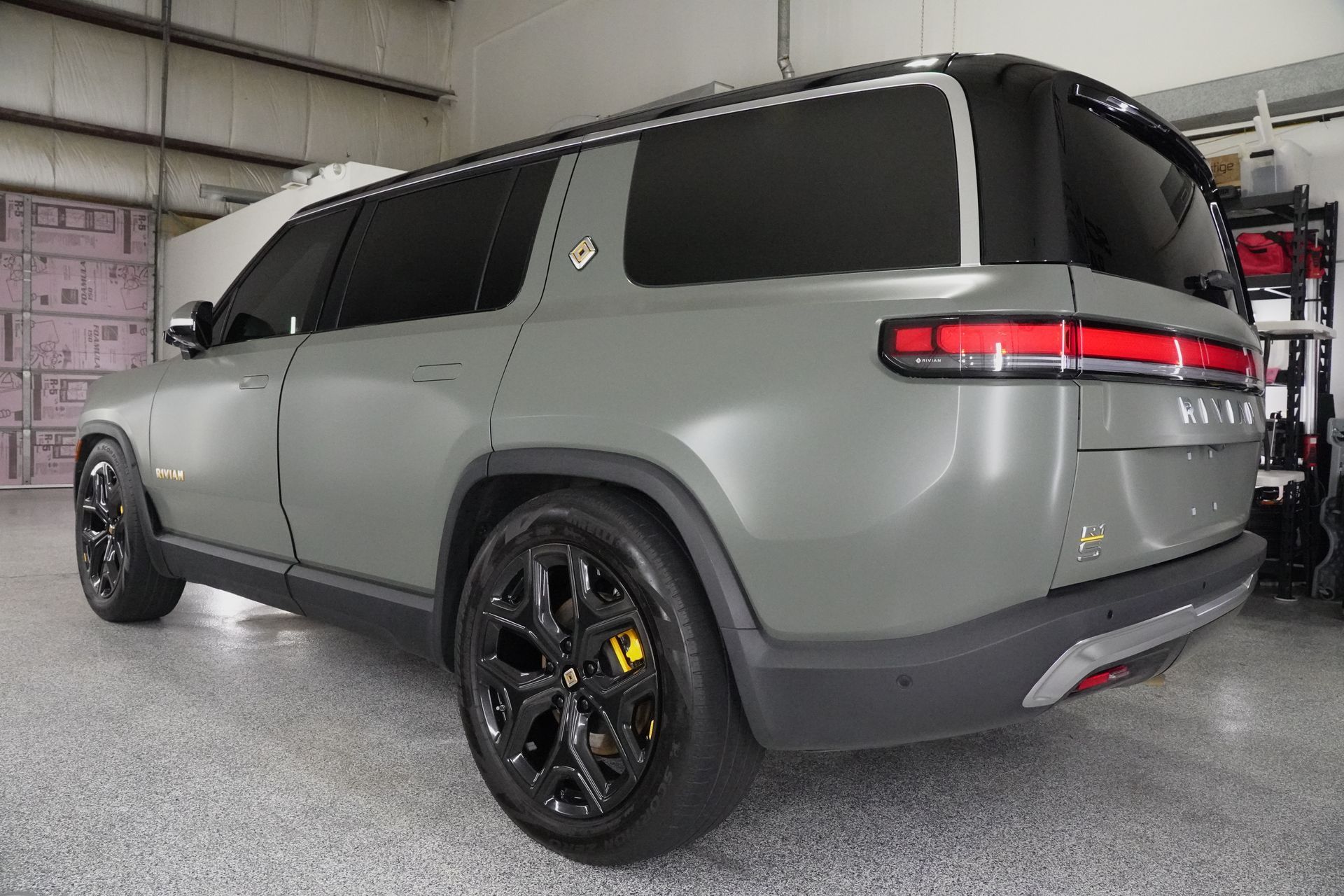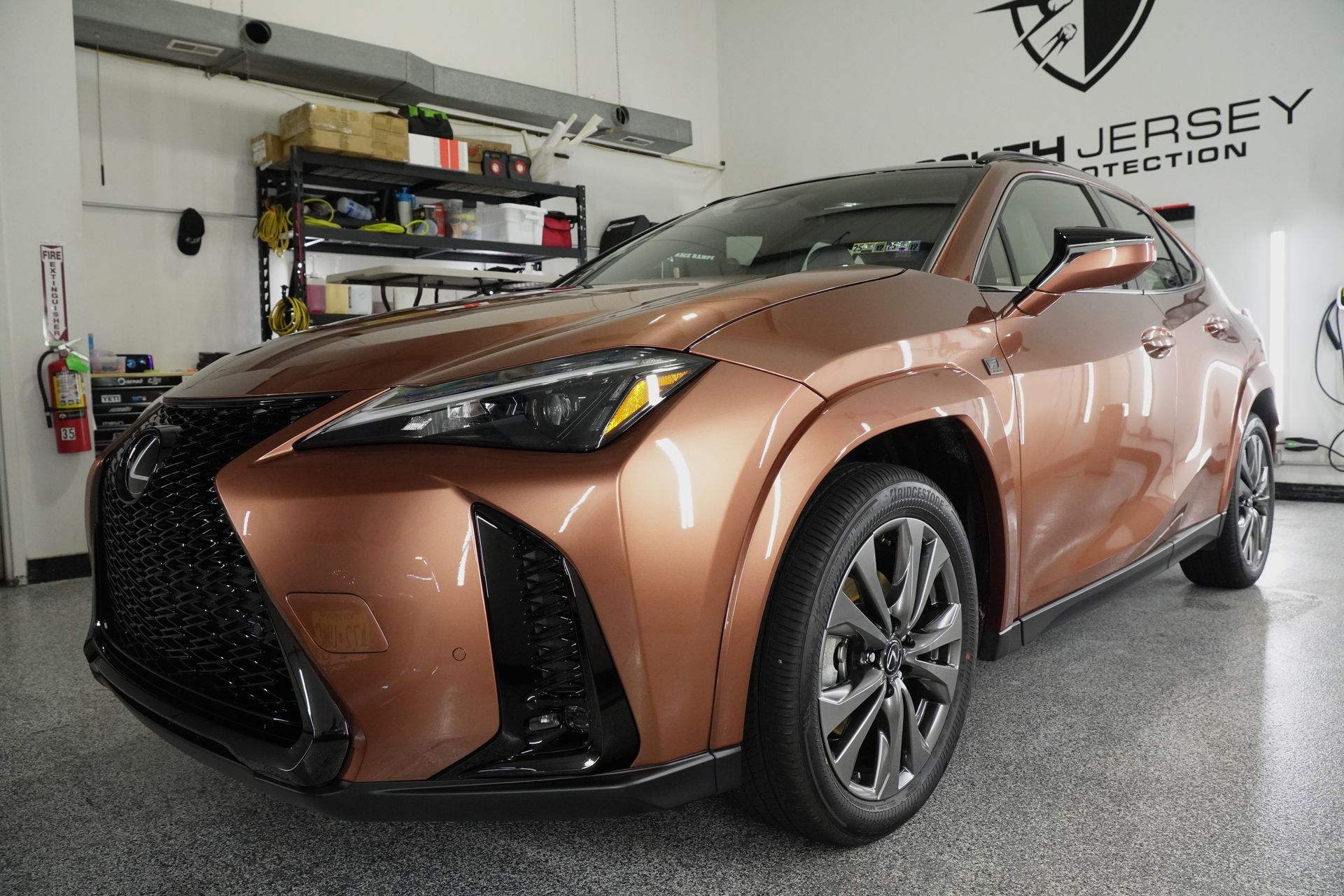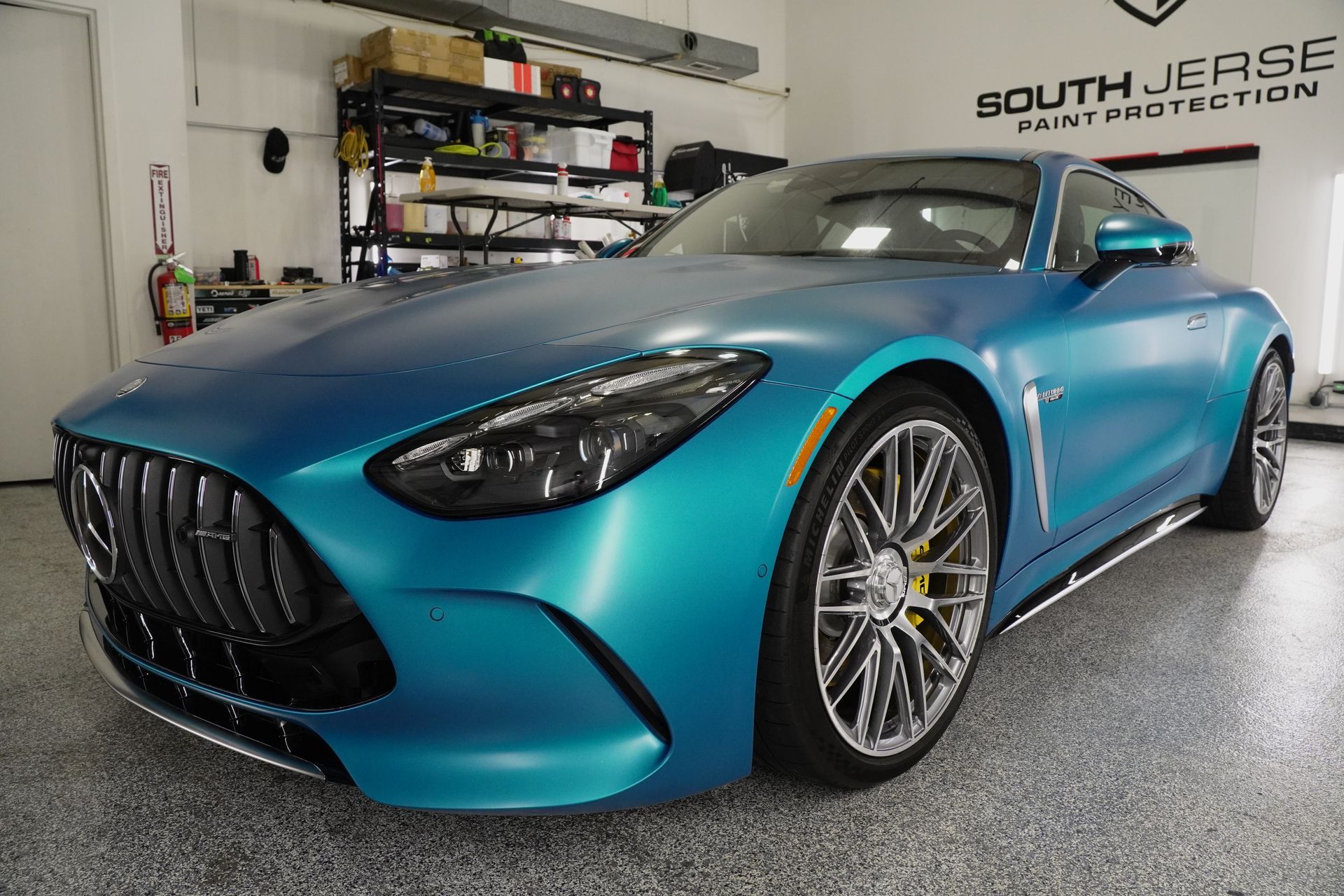The Great Debate: DIY vs Professional PPF Application
South Jersey PPF Experts Set the Record Straight on DIY vs Professional Wraps
The allure of PPF isn’t just its protective prowess; it's also in its ability to maintain the vehicle’s showroom shine without altering its original appearance. As car enthusiasts and daily drivers alike seek ways to prolong the pristine condition of their vehicles, PPF emerges as a top choice. However, alongside this rising demand, there’s been a surge in the availability of DIY PPF kits. These kits, tempting with their promise of cost savings and the satisfaction of a personal project, have led many to attempt the intricate task of applying PPF themselves.
This burgeoning trend towards DIY raises crucial questions about the efficacy and prudence of self-application versus professional installation. Applying PPF is not a straightforward task—it's a meticulous process that demands precision, skill, and the right environment. The high standards required for a flawless and effective application are challenging to meet outside of a professional setting.
This piece aims to delve into the complexities of PPF, providing a comprehensive understanding of what it entails and why professional installation is paramount. It will shed light on the nuanced differences between a DIY project and a professional application, highlighting the potential pitfalls of the former and the undeniable benefits of the latter. As we navigate through the intricacies of PPF, it becomes evident that entrusting this task to skilled professionals isn’t just a matter of convenience; it’s a critical decision to ensure the longevity, efficacy, and beauty of the protective
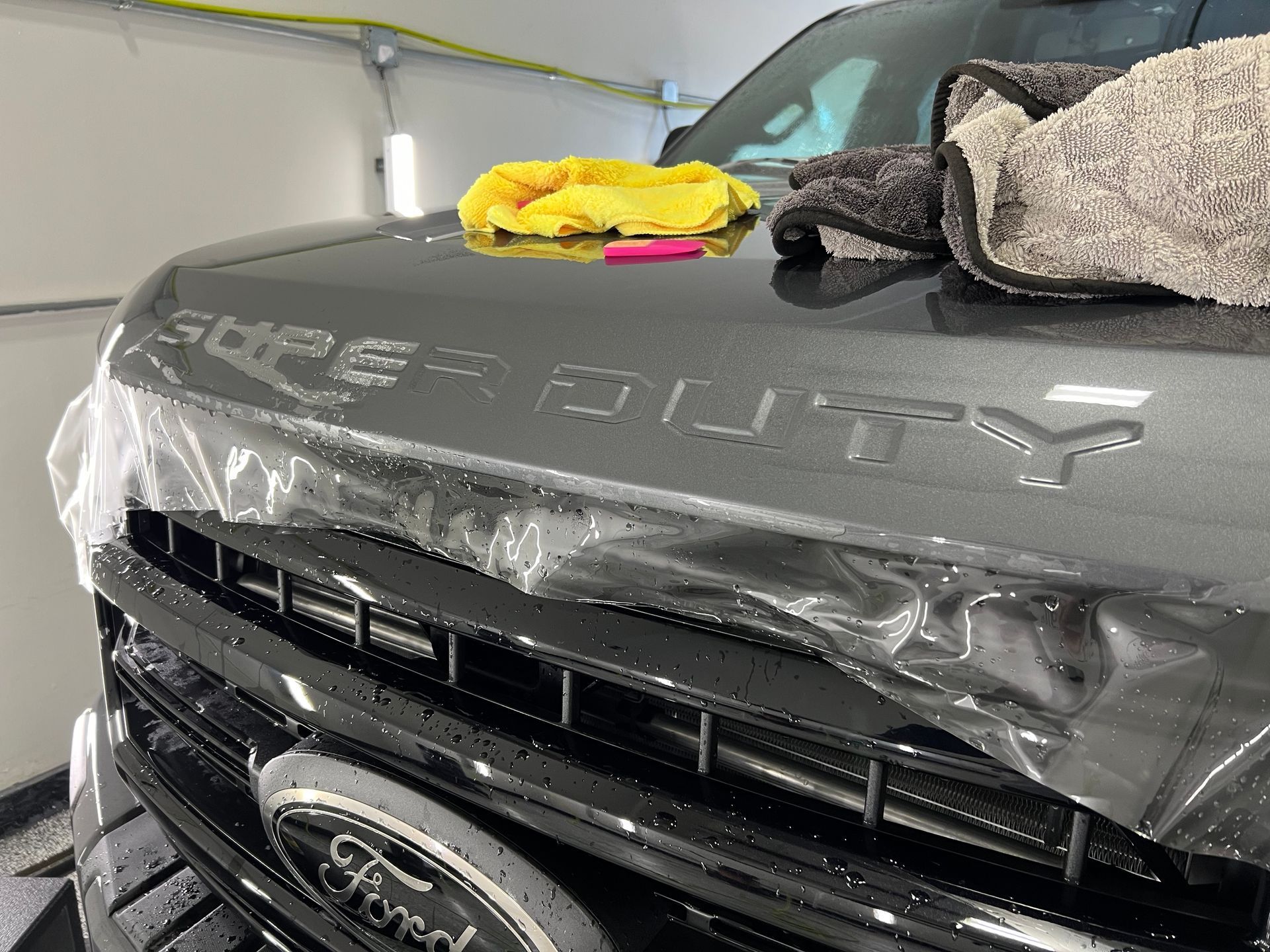
Overview of DIY PPF Kits
The advent of DIY Paint Protection Film (PPF) kits in the automotive market has been a notable development, particularly appealing to the hands-on car owner who relishes the idea of personally enhancing and protecting their vehicle. These kits typically come equipped with a roll of PPF, basic application tools such as squeegees, and a set of instructions or a link to an instructional video. Marketed as a cost-effective and accessible solution, DIY kits promise the allure of significant savings over professional installation, coupled with the satisfaction of accomplishing a complex task independently.
However, what is often overlooked in the marketing of these kits is the level of skill and precision required to apply PPF effectively. The material itself is a high-tech polyurethane film, which is both durable and flexible, but can be challenging to handle. It requires careful manipulation to conform to the contours and edges of a vehicle without creating bubbles, wrinkles, or misalignments. The tools provided in these kits, while adequate, often lack the quality and variety available to professional installers. For instance, the squeegees might not be as effective in removing air and water trapped under the film, a critical step in ensuring a smooth finish.
Moreover, the instructions provided, whether in written or video form, can only convey so much. They often do not account for the specific challenges posed by different vehicle models or external factors such as temperature and humidity, which can significantly impact the application process. The environment in which the application takes place also plays a crucial role. Unlike controlled professional setups, a typical home environment is prone to dust and other contaminants that can easily get trapped under the film, compromising both the aesthetic and protective qualities of the PPF.
While DIY PPF kits offer an apparent upfront saving and the appeal of a personal project, they also come with significant limitations. These limitations not only pertain to the quality of the materials and tools but also extend to the nuances of application that require professional expertise to navigate successfully. As such, these kits, though seemingly convenient and economical, may not always be the optimal choice for those seeking a flawless and enduring protective film for their vehicle.
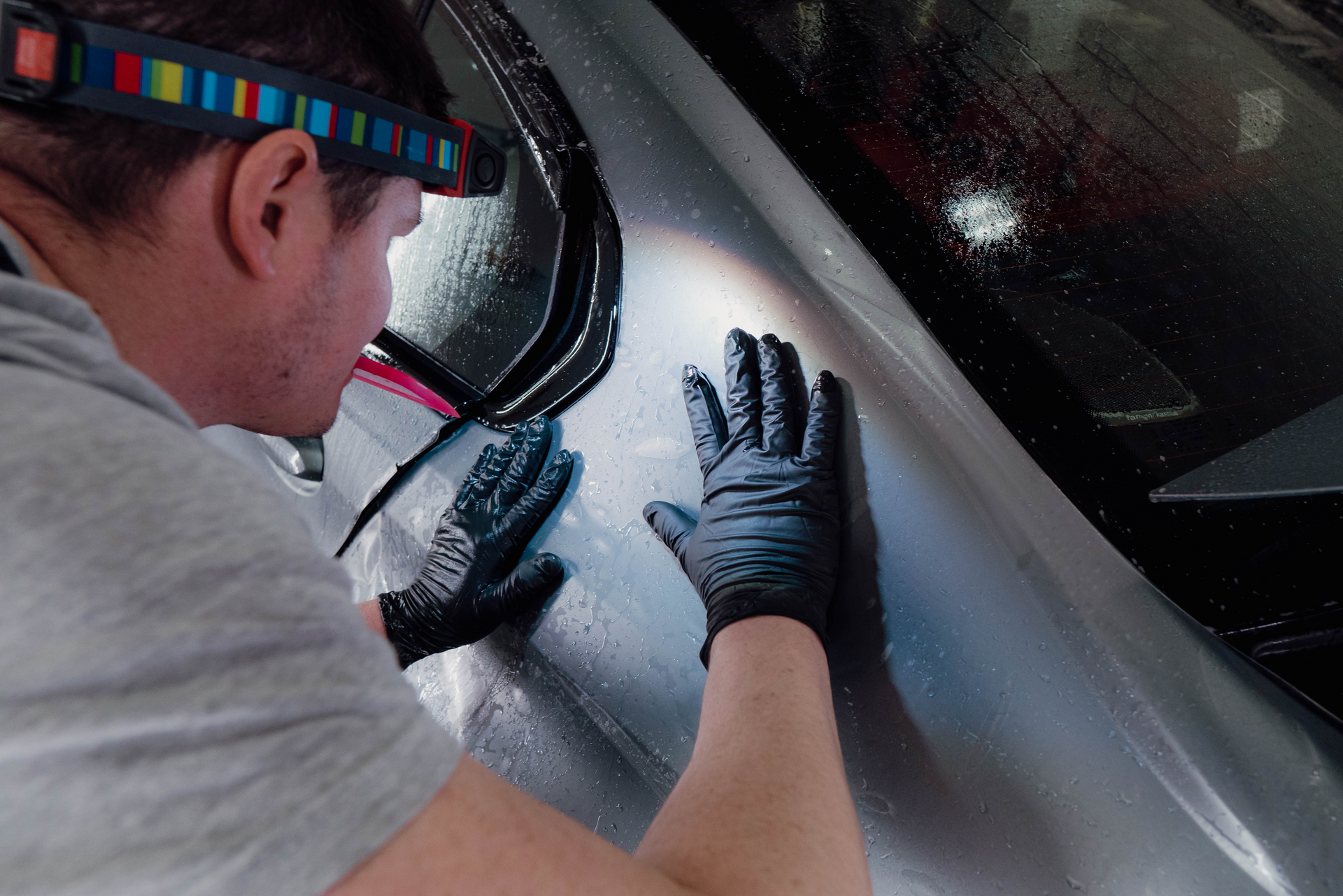
Challenges and Shortcomings of DIY PPF Installation
Embarking on a DIY Paint Protection Film (PPF) installation presents a range of challenges and shortcomings that often go underestimated by vehicle owners. The process, far more complex than typical home DIY projects, demands not only precision and patience but also a deep understanding of the material and the application technique.
One of the primary challenges lies in the application technique itself. PPF is a thin, flexible film that needs to be stretched and manipulated to fit the contours of a vehicle perfectly. Achieving a seamless finish without any bubbles, wrinkles, or creases is a skill honed through extensive practice and experience. DIY enthusiasts often find themselves struggling with these issues, leading to an end result that is far from the desired professional standard. Even minor errors in application can lead to significant aesthetic and functional deficiencies, such as peeling edges or visible imperfections, which can detract from the vehicle's appearance and fail to provide adequate protection.
Another significant challenge is the handling of the film. PPF is delicate and can easily be stretched or torn if not handled correctly. This is particularly problematic around complex curves and edges, which are common on most vehicles. An uneven stretch can lead to distortion in the film's appearance and reduced durability. Furthermore, any contaminants, such as dust or fingerprints, that get trapped under the film during the application process can cause imperfections and weaken the adhesive bond, compromising the film's longevity and effectiveness.
The environment in which the DIY application takes place also poses significant challenges. Professional installers typically operate in clean, controlled environments to prevent contamination of the film. In contrast, a typical garage or driveway setting, where most DIY installations occur, cannot replicate these conditions. Factors like dust, wind, temperature, and humidity can all adversely affect the application process, leading to subpar results.
Lastly, the inherent limitation of DIY kits in terms of the quality of tools and the film itself can result in a less durable and less effective PPF application. Professional-grade films and tools are often superior in quality and performance, designed to ensure optimal application and longevity, which DIY kits may not match.
While the prospect of DIY PPF installation might be appealing for various reasons, the challenges and shortcomings inherent in the process are significant. From technical difficulties in application to environmental constraints and material limitations, these factors collectively contribute to a high risk of suboptimal results, making professional installation a more reliable choice for effective and long-lasting paint protection.
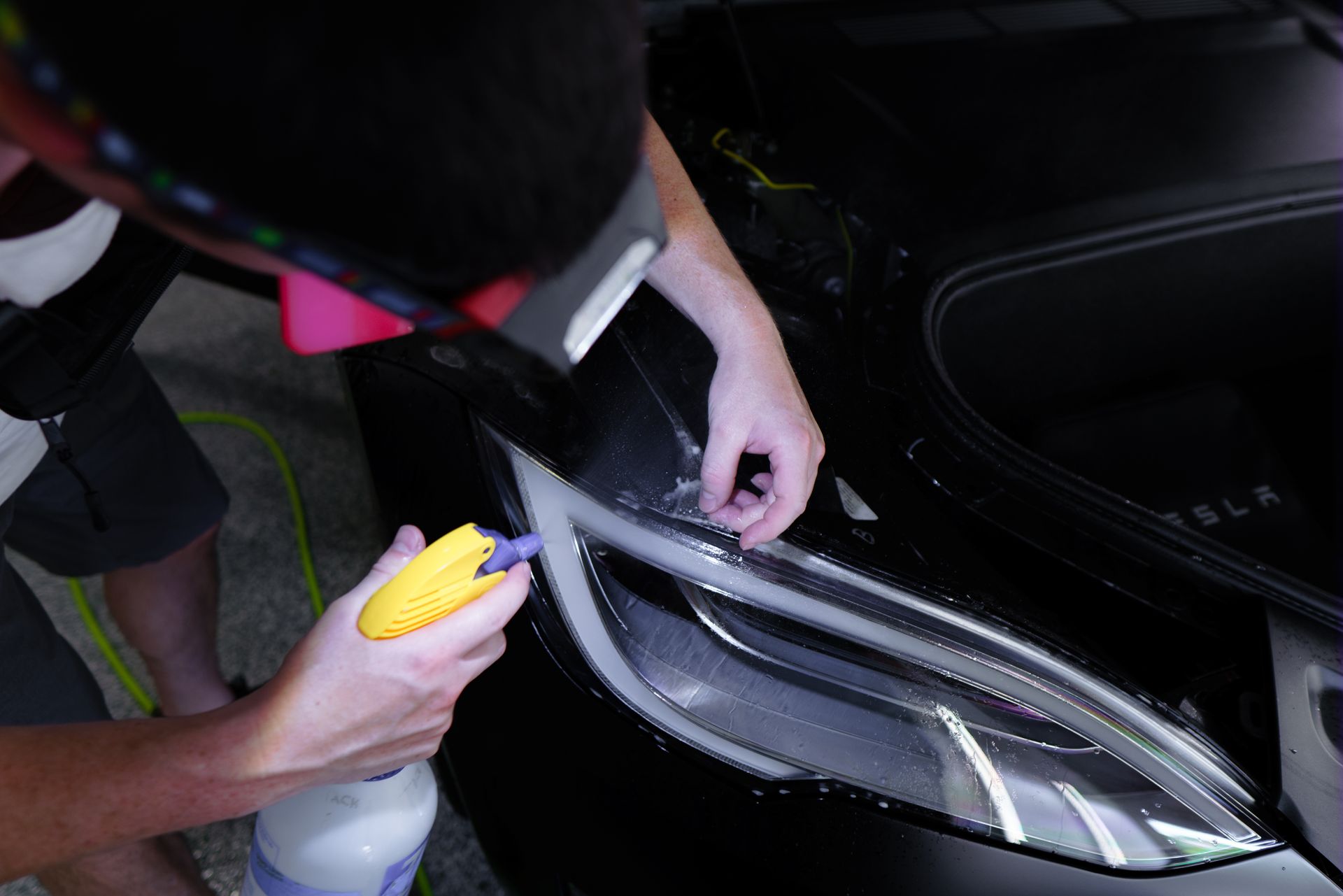
Benefits of Professional PPF Installation
Professional installation of Paint Protection Film (PPF) offers a multitude of benefits that DIY kits simply cannot match. One of the most significant advantages is the level of expertise and precision that professional installers bring to the task. Trained extensively, these specialists possess a deep understanding of the intricacies involved in PPF application, ensuring that the film is applied seamlessly, without bubbles, wrinkles, or misalignments. This expertise is particularly crucial for complex vehicle designs where the film needs to conform to intricate contours and edges.
Professionals also have access to superior quality PPF materials, which are often more advanced than those available in DIY kits. These high-grade films are engineered for durability, clarity, and a perfect fit, ensuring long-lasting protection and aesthetic appeal. The adhesives used in these films are also of higher quality, providing a stronger bond and longer lifespan.
Another critical advantage is the use of specialized tools and equipment. Professional installers utilize a range of advanced tools that allow for precise and efficient application. These tools help in achieving a flawless finish that is nearly impossible to replicate with the basic tools provided in DIY kits. For example, professional-grade squeegees, heat guns, and slip solutions are designed to handle the film delicately and accurately.
Moreover, the environment in which professional installation takes place plays a significant role. Professional facilities are designed to provide a clean, controlled environment, free from dust and other contaminants that can affect the application process. This controlled setting is essential for ensuring that the PPF adheres correctly and remains free of imperfections.
Professional installation also comes with the peace of mind of a warranty. Most professional installers offer a warranty on both the film and the installation, providing assurance of the quality and durability of the work. This warranty is not just a guarantee against defects but also a testament to the confidence in the quality of the installation.
The benefits of professional PPF installation – from expert application and superior materials to specialized tools and a controlled environment – culminate in a level of quality and durability that DIY methods cannot replicate. Choosing professional installation is not just about the immediate results; it's an investment in the long-term protection and preservation of your vehicle's appearance.
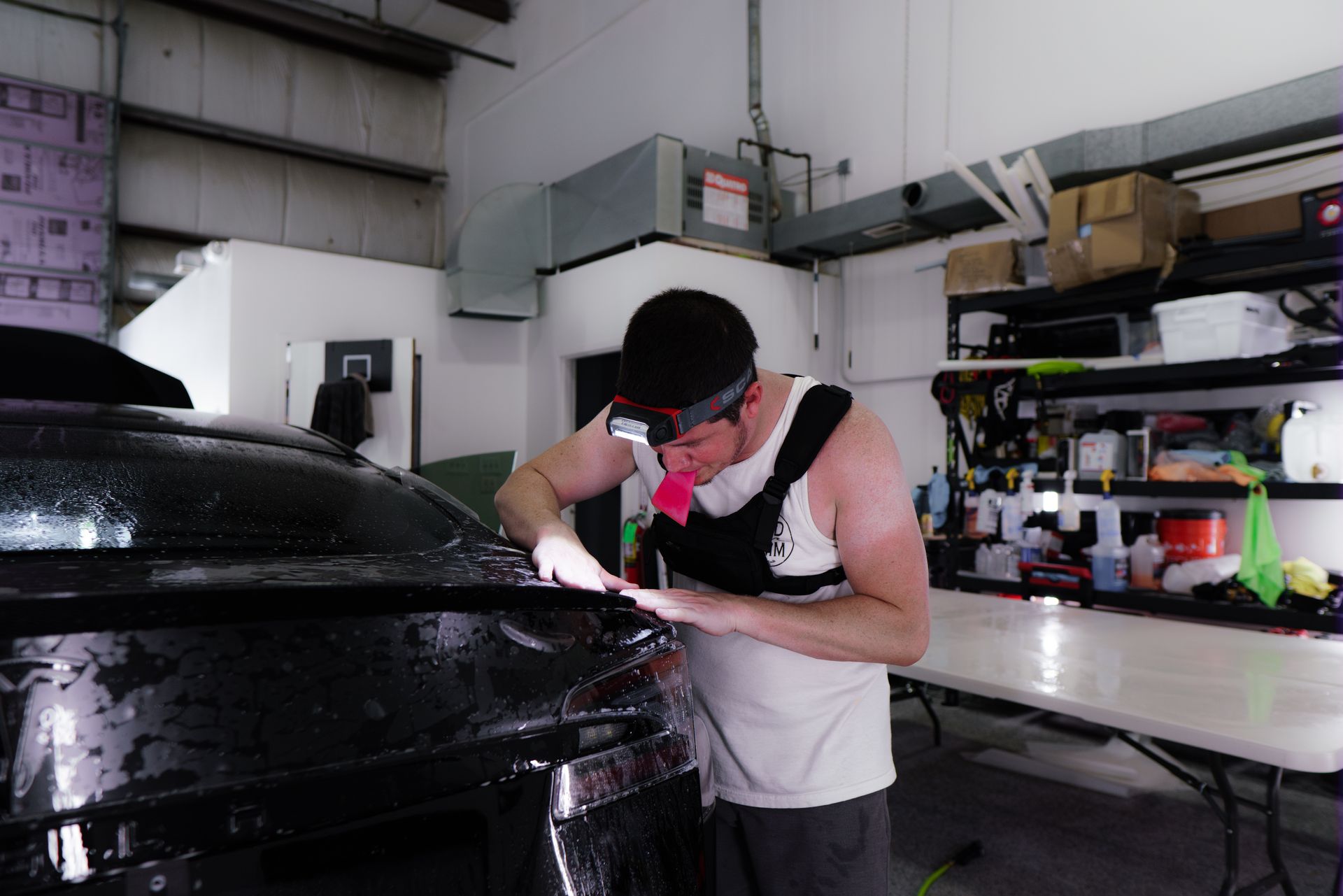
Economic Considerations
When considering the installation of Paint Protection Film (PPF), it's crucial to weigh the economic implications of choosing between DIY and professional services. At first glance, DIY PPF kits may appear more cost-effective, primarily due to their lower upfront costs. However, a deeper analysis reveals that the true economics of PPF installation encompass more than just initial expenses; they involve evaluating long-term value, durability, and potential future costs associated with maintenance and corrections.
The initial cost savings offered by DIY kits can be enticing. These kits, priced significantly lower than professional services, seemingly provide a budget-friendly option. However, this initial saving can be misleading. DIY applications often lead to suboptimal results, such as misalignments, air bubbles, and inadequate coverage, which compromise the film's protective abilities and aesthetic quality. These issues frequently necessitate reapplication or professional correction, leading to additional expenses that could exceed the cost of initial professional installation.
Professional PPF installation, while more expensive upfront, offers a more comprehensive economic advantage. Firstly, the longevity and durability of professionally installed PPF mean that the film remains effective for longer, reducing the need for frequent replacements. This extended lifespan translates into cost savings over time. Additionally, the quality of workmanship provided by professionals ensures that the film performs its protective role effectively, potentially saving money on paint repairs and maintaining the vehicle's resale value.
Moreover, professional installations often come with warranties, covering both the product and the installation. This warranty not only provides peace of mind but also serves as a safety net for any potential issues that might arise, ensuring that any necessary repairs or adjustments are covered without additional costs.
While DIY PPF kits offer an appealing low upfront cost, the economic analysis extends beyond initial expenses. Professional installation presents a more economically sound choice in the long run, considering factors like longevity, quality, warranty, and the potential cost of corrections. Vehicle owners looking for a cost-effective solution must therefore consider these broader economic factors, recognizing that the value of professional installation lies in its ability to provide lasting, high-quality protection, ultimately proving to be a prudent financial decision.
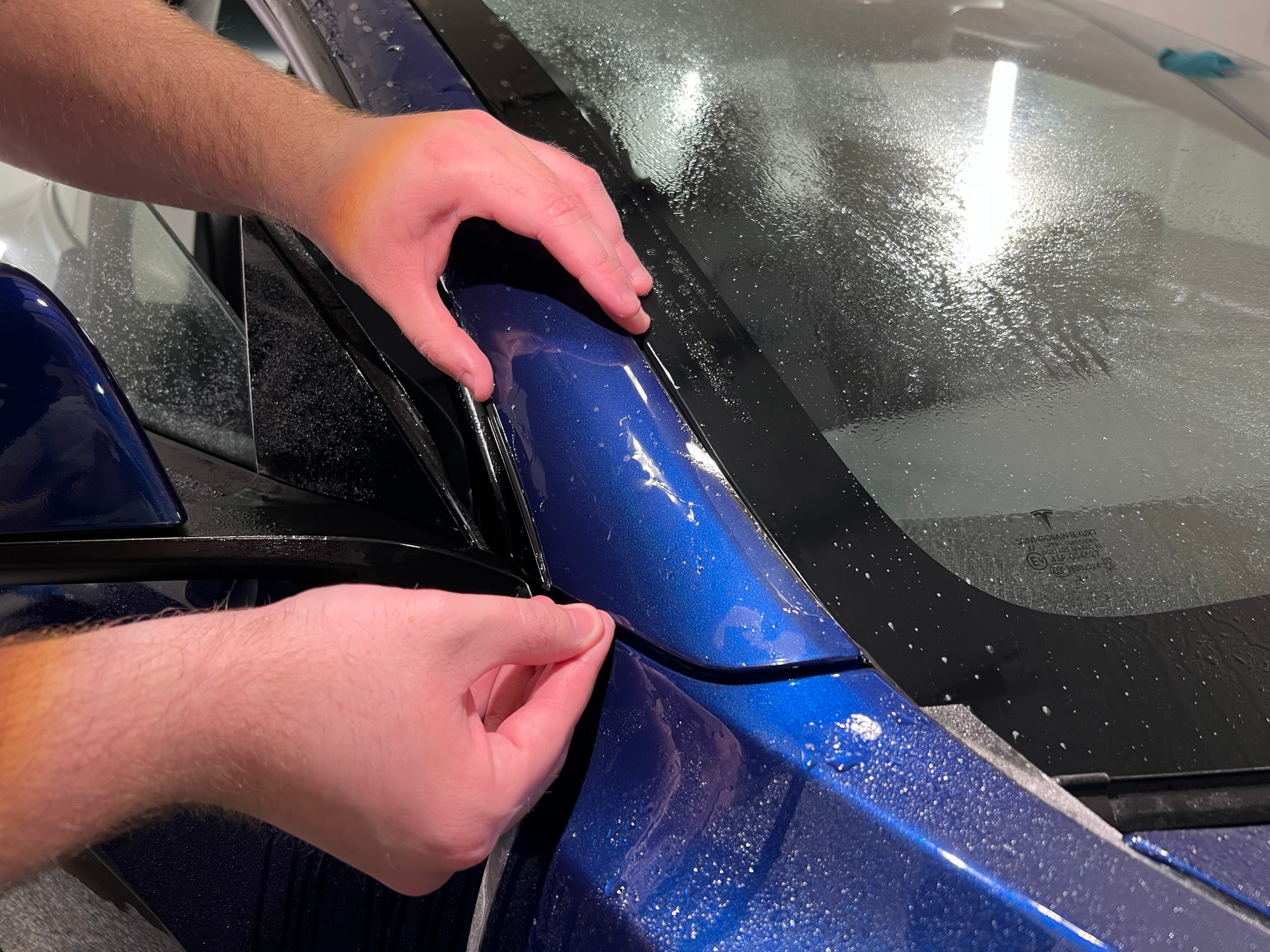
Risks Associated with DIY PPF Application
The decision to apply Paint Protection Film (PPF) using a DIY approach carries several risks that are often overlooked in the initial enthusiasm for a self-managed project. These risks not only pertain to the immediate appearance and effectiveness of the PPF but also have long-term implications for the vehicle's condition and the owner's financial outlay.
One of the primary risks is the potential for improper application. PPF requires a precise and skillful hand to apply, something that professional installers develop through extensive training and experience. DIY attempts can lead to issues such as air bubbles, wrinkles, and misalignment, which not only detract from the vehicle's aesthetic appeal but also compromise the film's protective capabilities. Poorly applied PPF can peel off or fail to adequately protect the vehicle's paint from scratches and environmental damage, defeating the purpose of the film.
Another significant risk involves inadvertent damage to the vehicle's paint during the application process. Incorrect handling of tools or the film itself can lead to scratches or other damage to the underlying paint. This is particularly true in areas where the film needs to be stretched or trimmed. Such damage is not only unsightly but can also be costly to repair.
Environmental factors present an additional risk. Professional installations are typically conducted in controlled environments to ensure cleanliness and optimal conditions. DIY applications, however, are often carried out in less than ideal settings, like home garages or driveways, where dust, debris, and fluctuating temperatures can adversely affect the application process. Contaminants trapped under the film or adverse conditions during the curing process can lead to a substandard finish and reduced longevity of the film.
Furthermore, a failed DIY PPF application can have financial implications. While the initial investment in a DIY kit may be lower, any mistakes that require professional correction or complete reapplication will incur additional costs. This not only negates the initial savings but can also result in a higher overall expenditure compared to opting for professional installation from the start.
The risks associated with DIY PPF application are multifaceted, encompassing aesthetic, functional, and financial aspects. Vehicle owners considering a DIY approach must weigh these risks against their abilities and the potential for additional costs and complications. In many cases, the assurance of quality and longevity offered by professional installation makes it a more prudent and ultimately more economical choice.
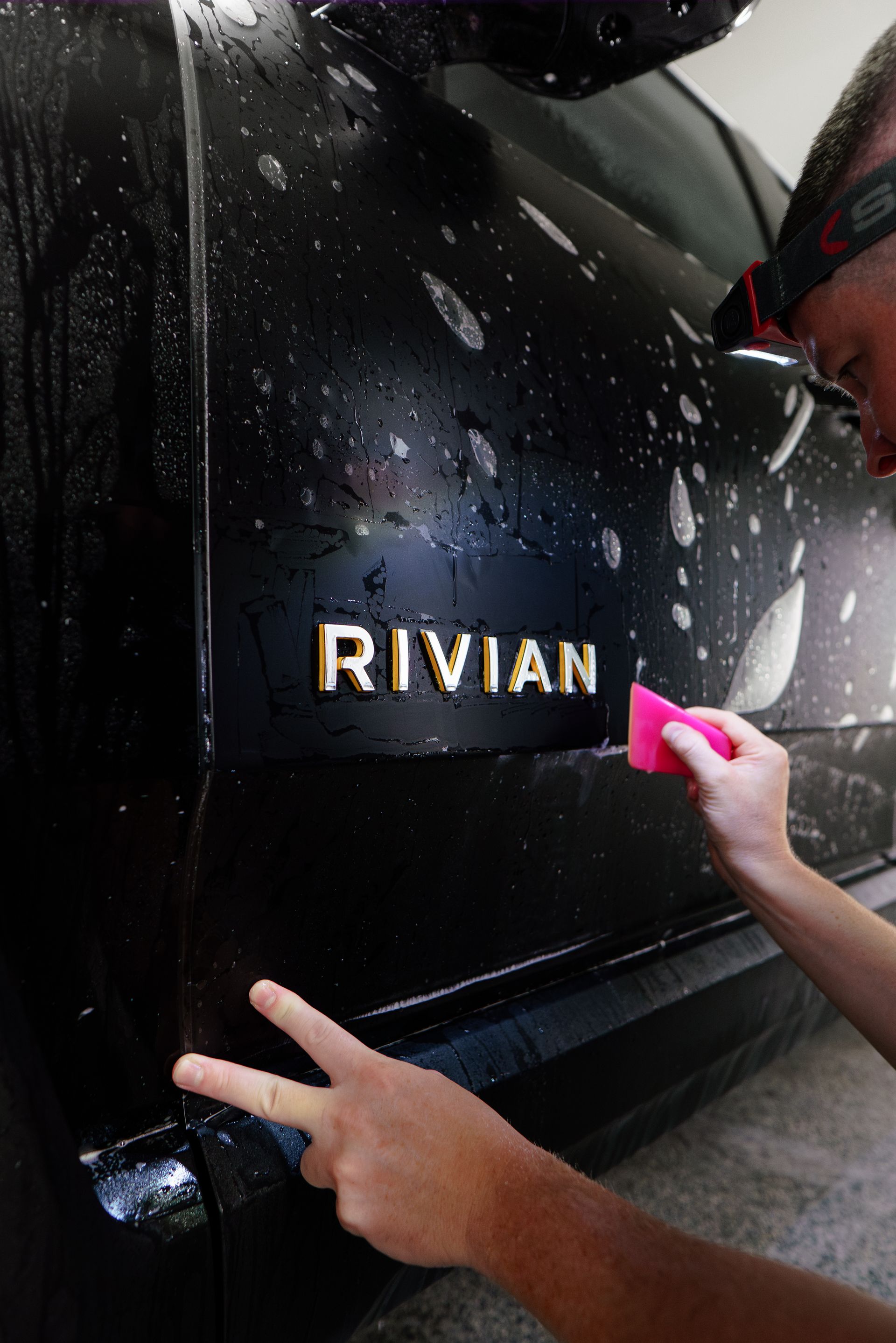
Unmatched Vehicle Care with Professional PPF Services
When it comes to safeguarding your vehicle, the choice between attempting a DIY project and opting for professional installation of Paint Protection Film (PPF) is significant. For residents and car enthusiasts in New Jersey, South Jersey Paint Protection has become a name synonymous with excellence and reliability in automotive care. This conclusion is not just a summary of the benefits of professional PPF application; it's a testament to our dedication to providing the highest standard of service and protection for your vehicle.
Choosing professional PPF installation goes beyond just preserving the vehicle's exterior; it's about investing in its longevity and maintaining its pristine condition. In the varied climate of New Jersey, where vehicles are subjected to everything from icy winters to sun-soaked summers, having a professionally installed PPF can make a substantial difference. Our expert team at South Jersey Paint Protection employs the latest techniques and the finest materials to ensure comprehensive protection against environmental elements and the rigors of daily use.
What sets our services apart is our understanding that each vehicle is unique and requires a tailored approach. In regions like South Jersey, where diverse automotive needs converge, we offer customized solutions to meet each client’s specific requirements. Our meticulous application ensures a seamless finish, effectively guarding your vehicle against scratches, chips, and wear, enhancing both its aesthetic and resale value.
Moreover, choosing professional installation is a sound economic decision. While DIY kits might seem less expensive upfront, they often fall short in quality and durability. Our professional installation at South Jersey Paint Protection is not only about exceptional quality but also about ensuring long-term savings. By protecting your vehicle from potential damage and preserving its value, we offer a service that transcends immediate cost considerations, making it a wise investment for your vehicle.
For those seeking unmatched protection and care for their vehicles in New Jersey, South Jersey Paint Protection is the go-to destination. We combine expertise, superior quality, and attentive service to provide an unmatched PPF installation experience, ensuring that your vehicle remains in excellent condition for years to come.

